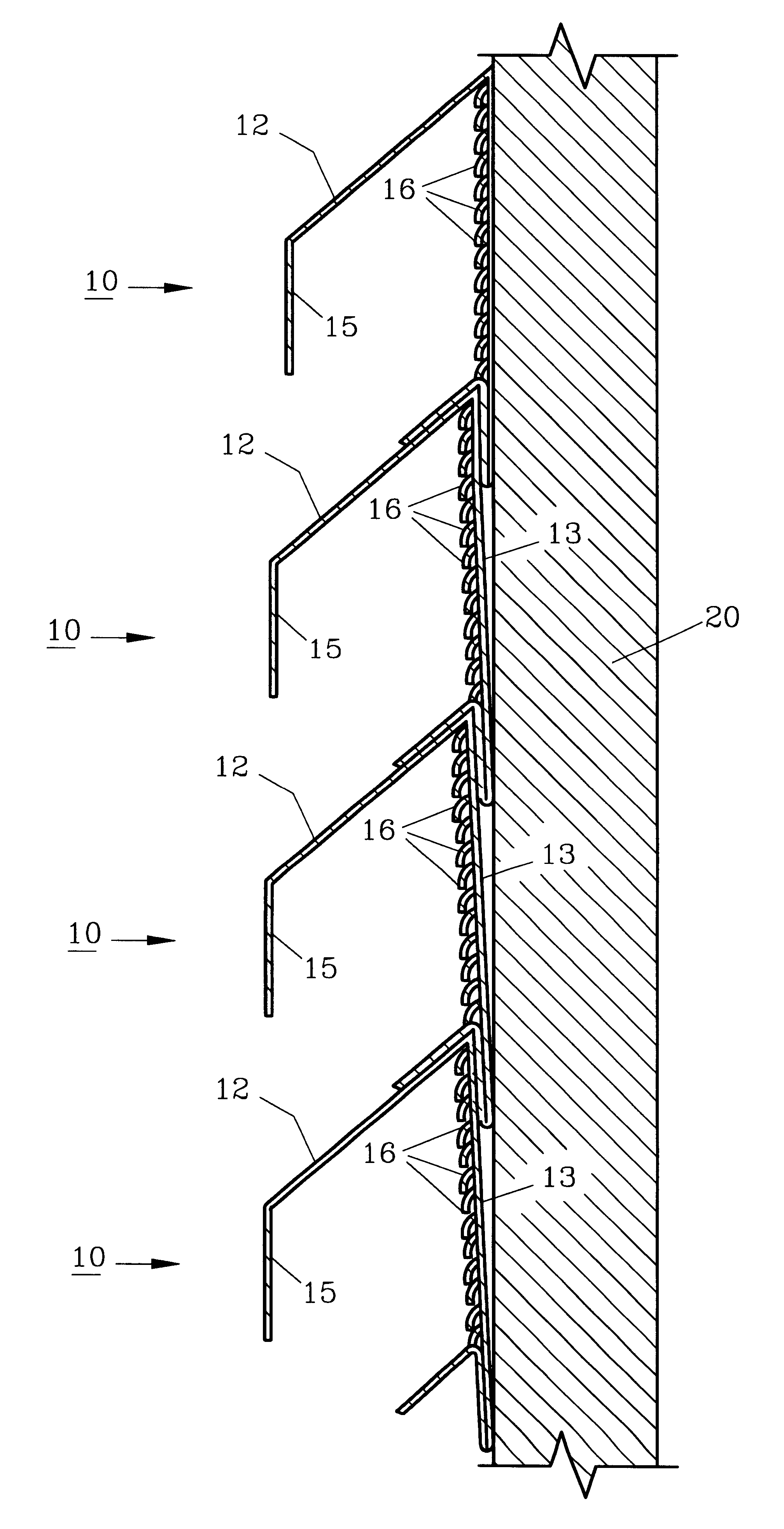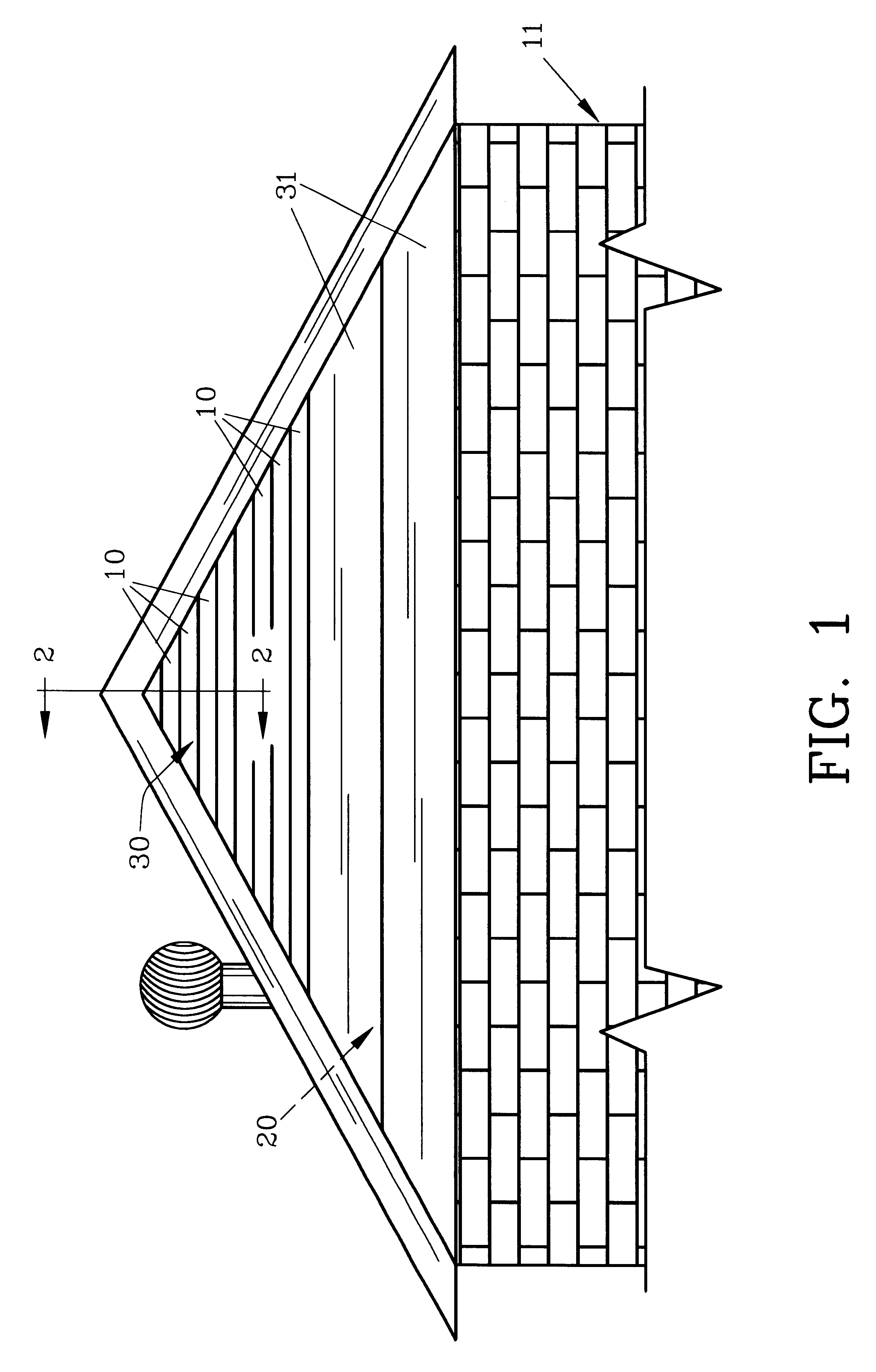Louver member and method
a technology of louver and member, which is applied in the field of louver member and method description of embo, can solve the problems of difficult to reach louver in houses, ineffective wooden louver, dissatisfactory homeowners, etc., and achieves the effect of simple hand-held tools, easy assembly and manufacture, and flexible size and shape of the louver assembly
- Summary
- Abstract
- Description
- Claims
- Application Information
AI Technical Summary
Benefits of technology
Problems solved by technology
Method used
Image
Examples
Embodiment Construction
For a more detailed explanation of the invention and its method of use, turning now to the drawings, FIG. 1 demonstrates in schematic form preferred louver members 10 attached to form louver assembly 30 on the end of attic 20 of house 11. Louver members 10 which form louver assembly 30 may be for example, formed preferably such as by extrusion of aluminum in twelve foot (3.66 m) sections for on-site cutting and installation. As seen in FIG. 2, louver members 10 have a general inverted V-shape with an elongated front section 12 and an elongated rear section 13 integrally formed such as by conventional extrusion or molding processes. Front section 12 includes a bent or downwardly directed portion 15 near the distal end thereof. Downward directed portion 15 is parallel to rear section 13. Louver members 10 are attached to supports such as roof truss member 20 such as by nails, staples, screws or otherwise. Truss member 20 is part of a usual roof truss system formed from wooden two-by-f...
PUM
 Login to View More
Login to View More Abstract
Description
Claims
Application Information
 Login to View More
Login to View More - R&D
- Intellectual Property
- Life Sciences
- Materials
- Tech Scout
- Unparalleled Data Quality
- Higher Quality Content
- 60% Fewer Hallucinations
Browse by: Latest US Patents, China's latest patents, Technical Efficacy Thesaurus, Application Domain, Technology Topic, Popular Technical Reports.
© 2025 PatSnap. All rights reserved.Legal|Privacy policy|Modern Slavery Act Transparency Statement|Sitemap|About US| Contact US: help@patsnap.com



